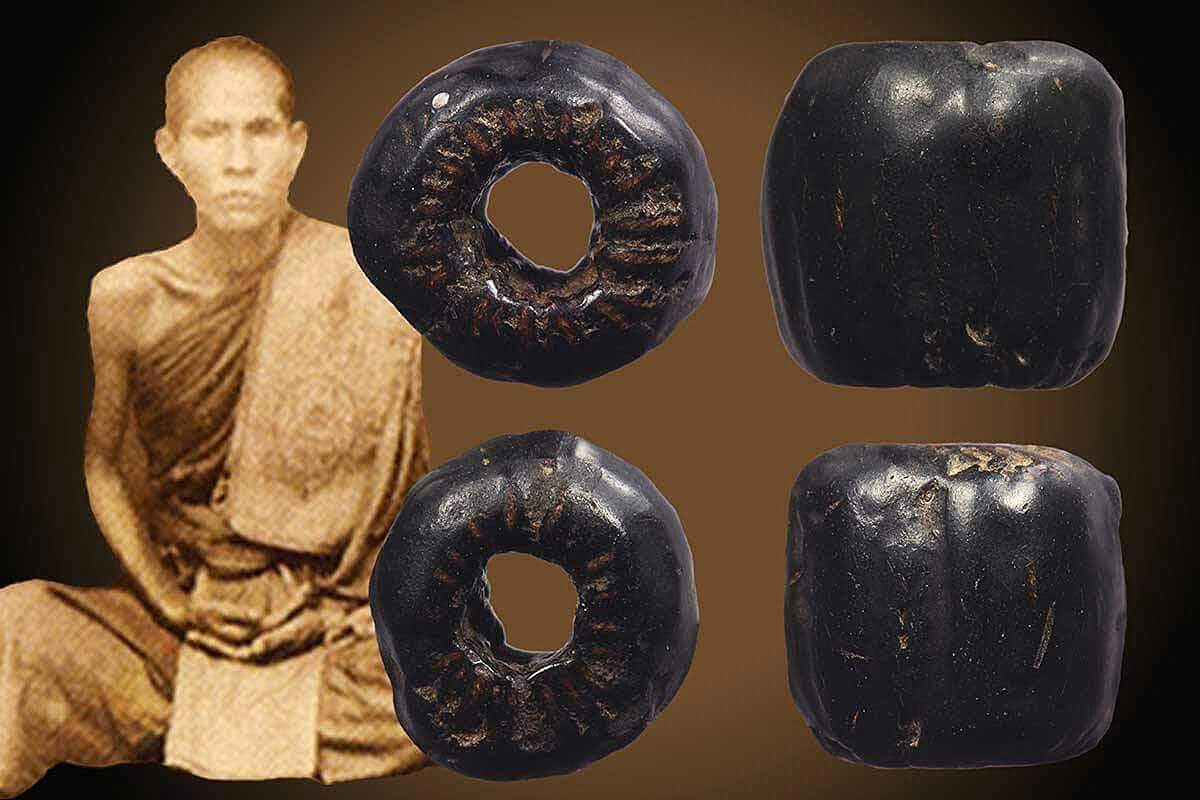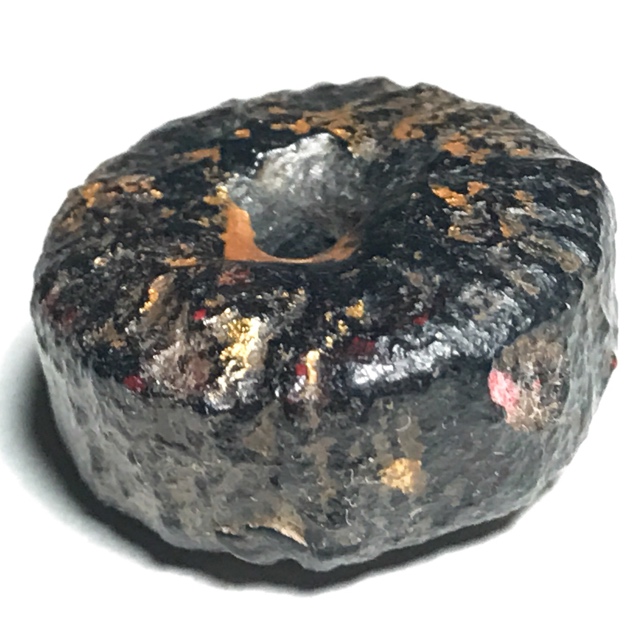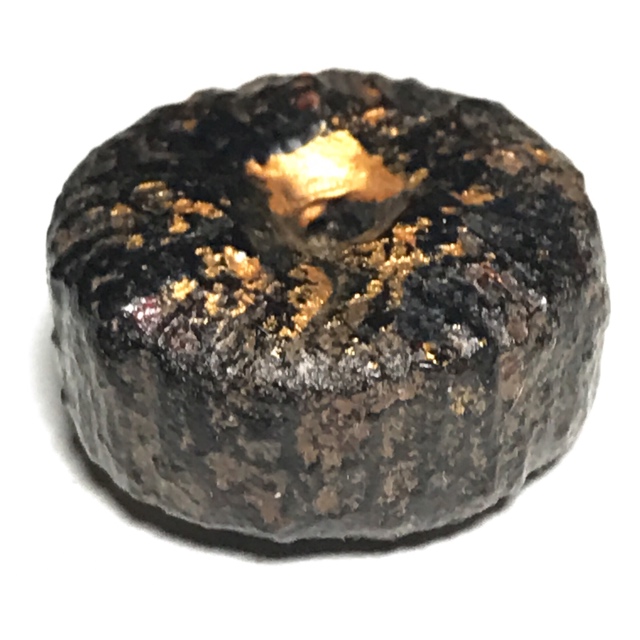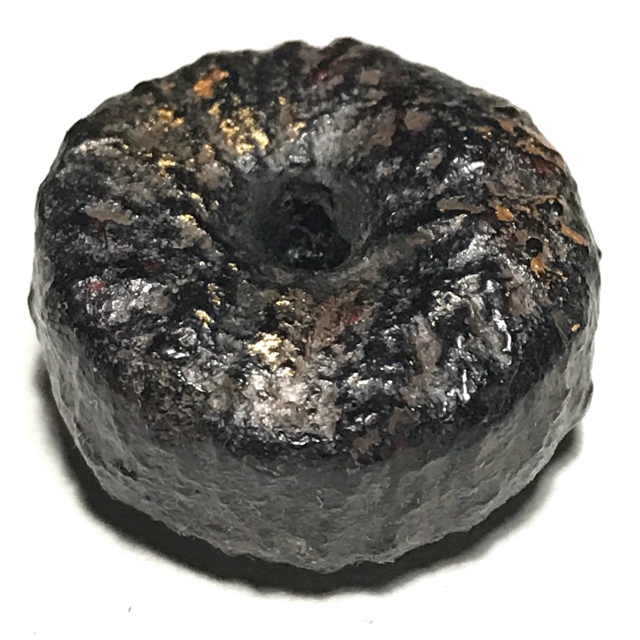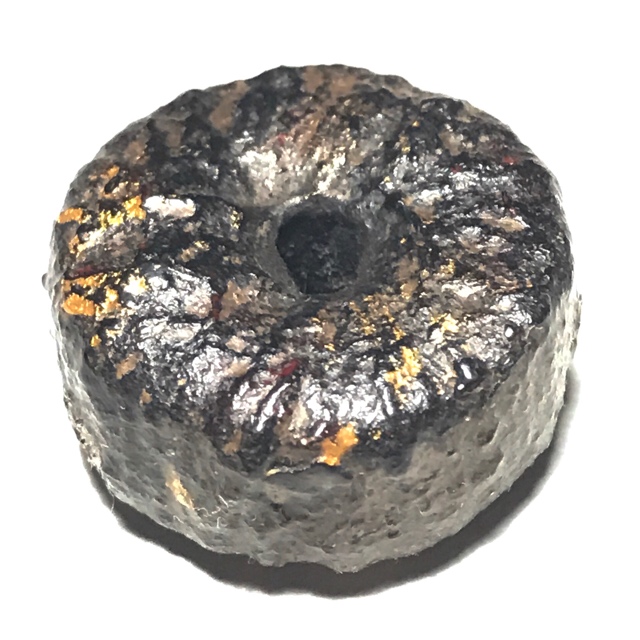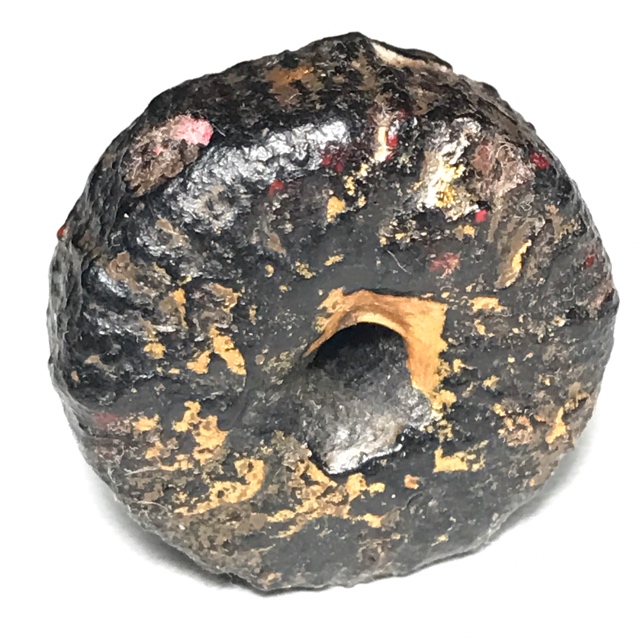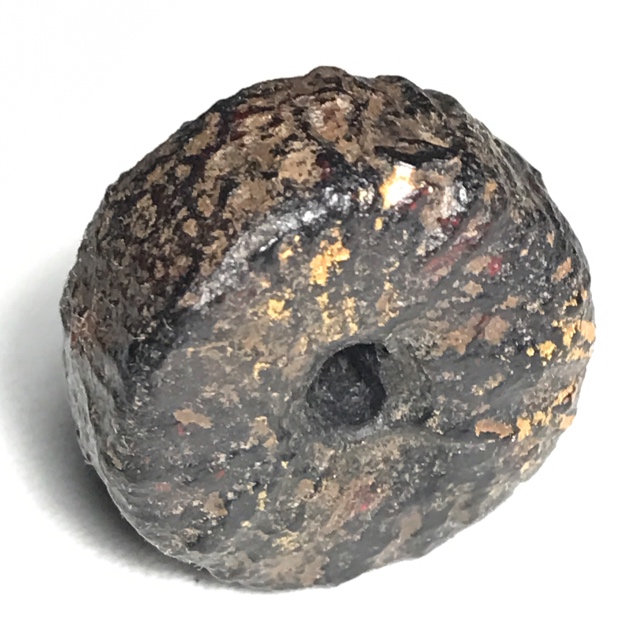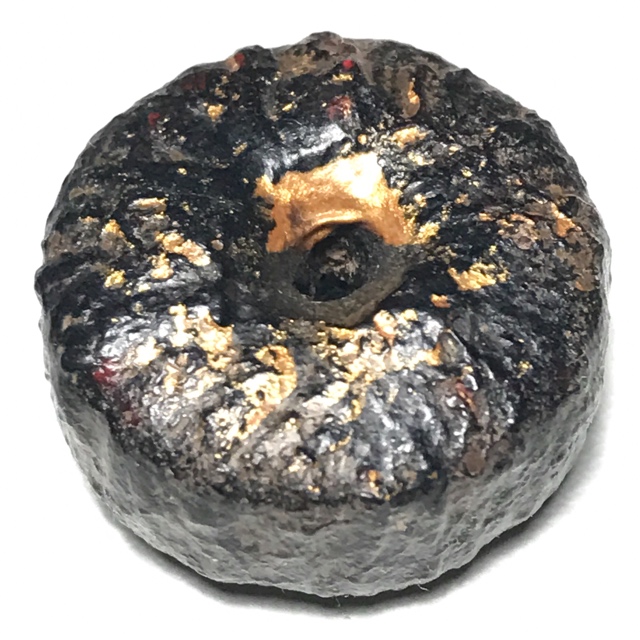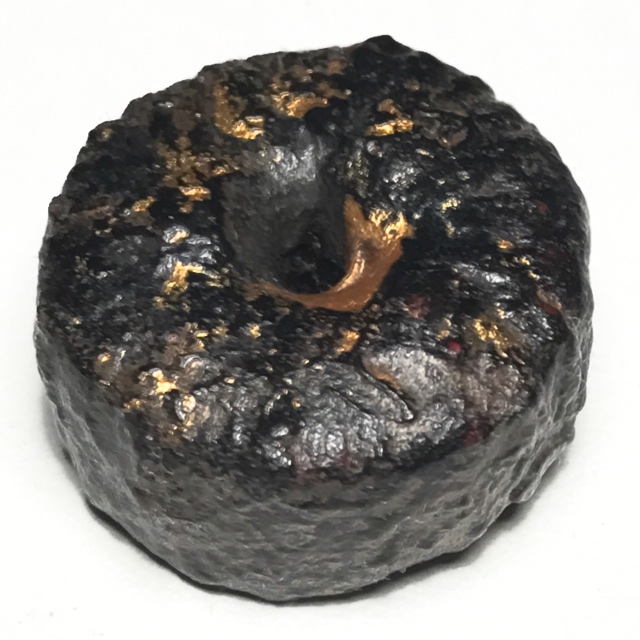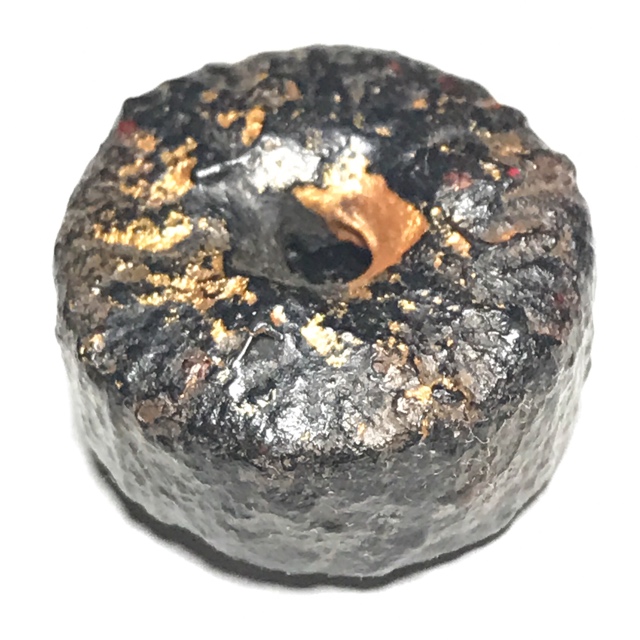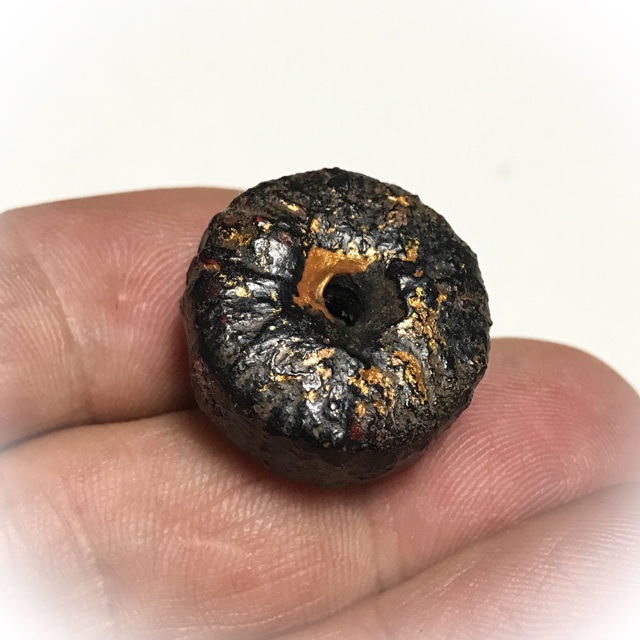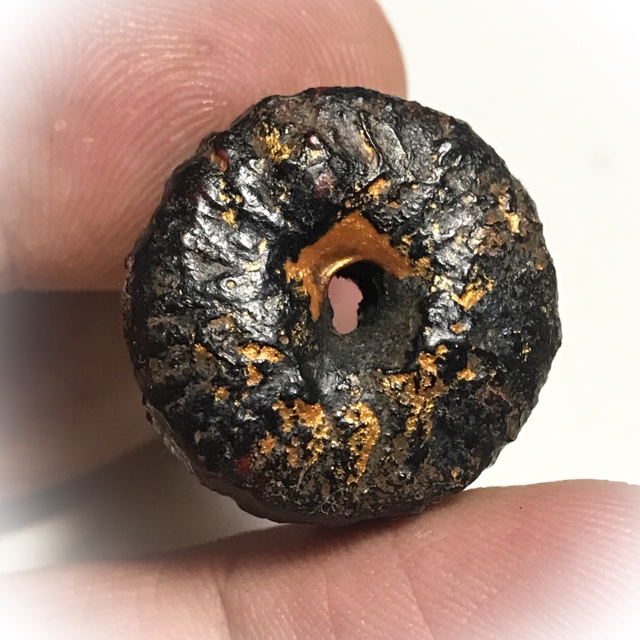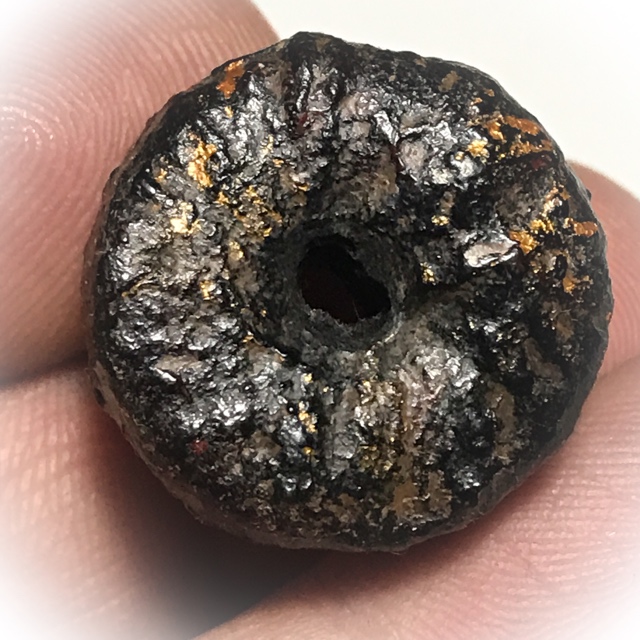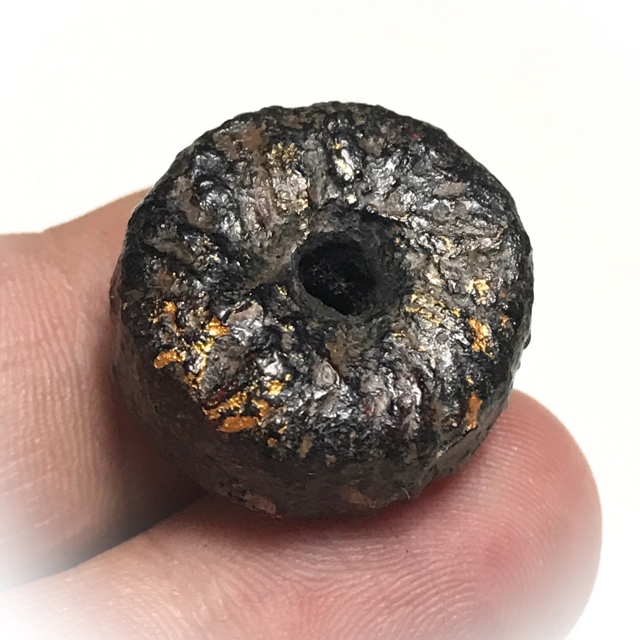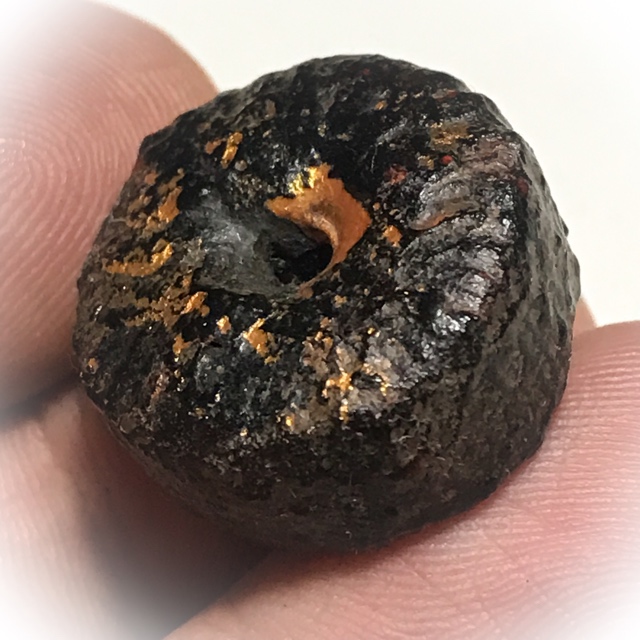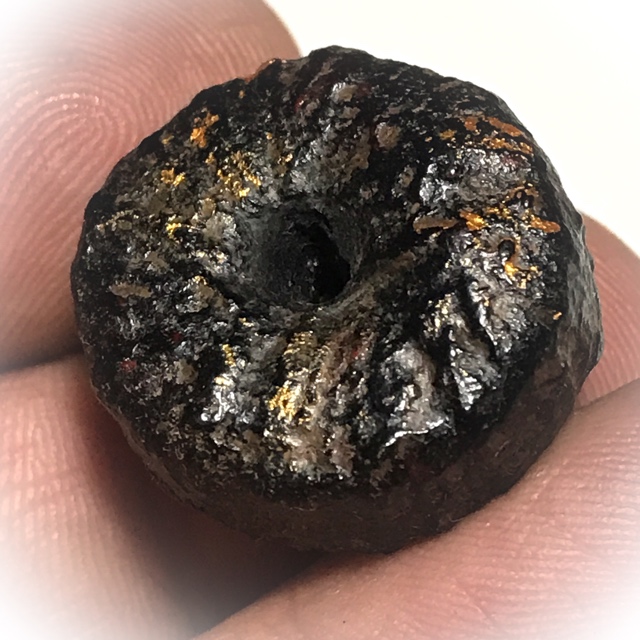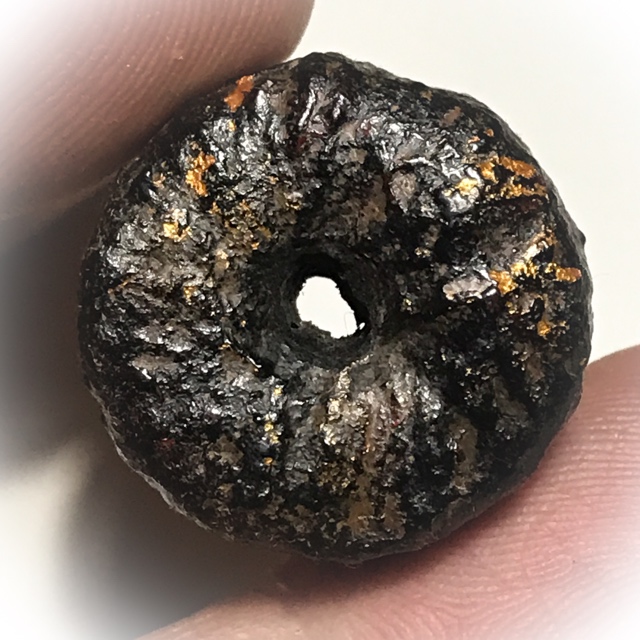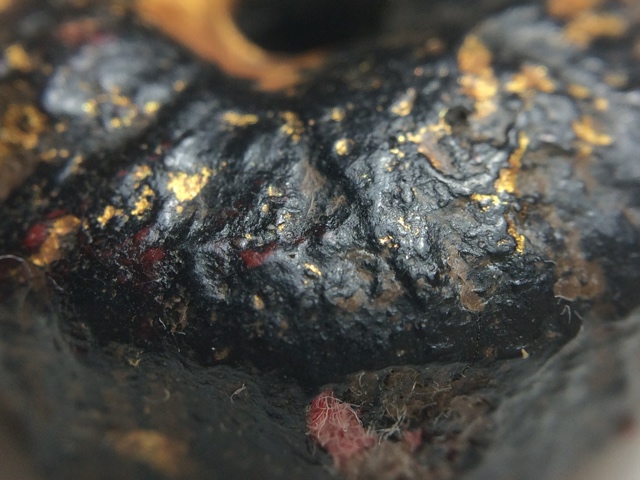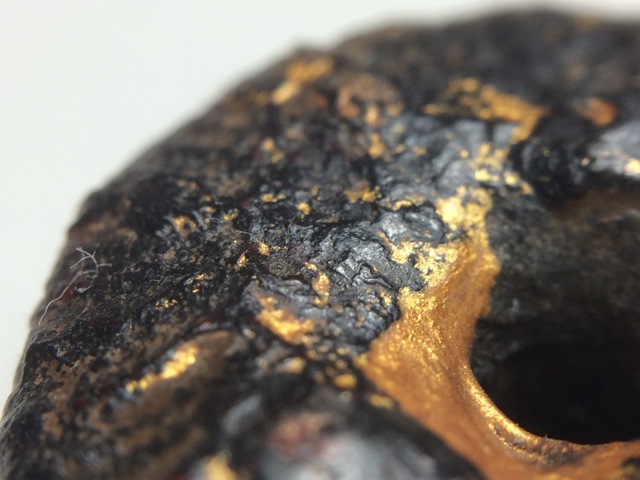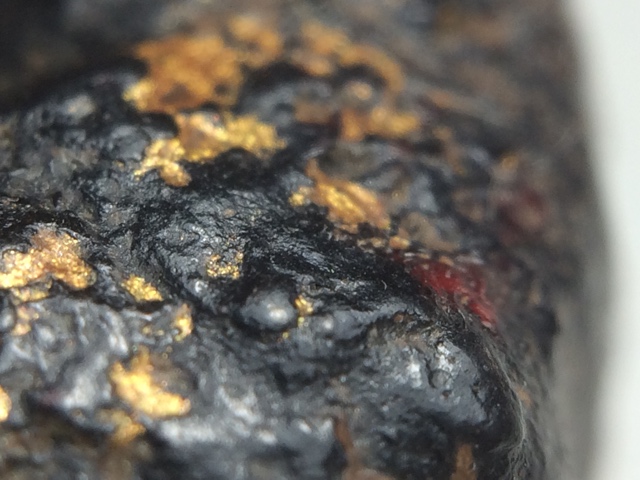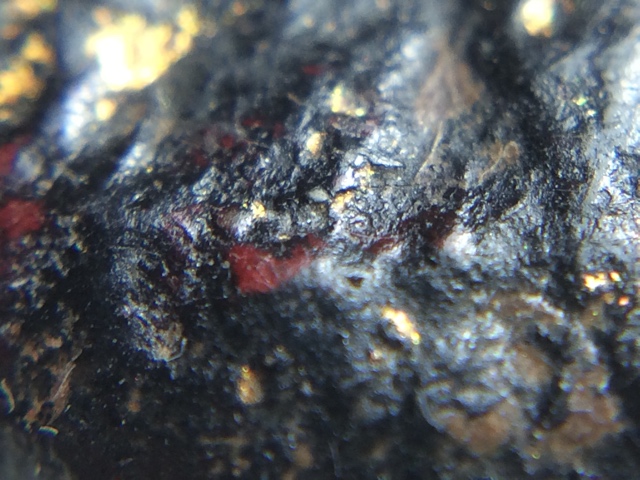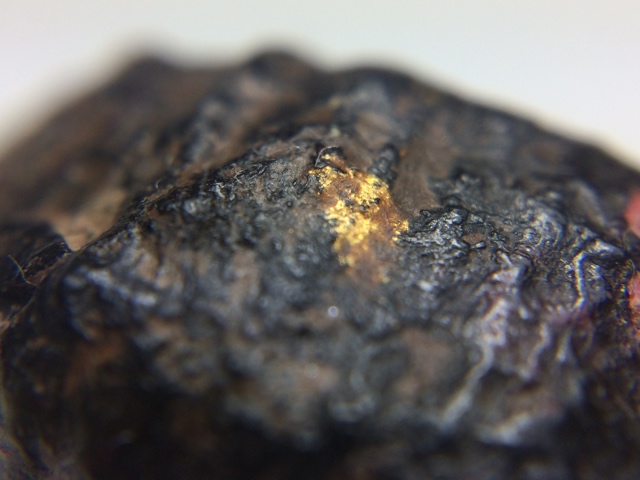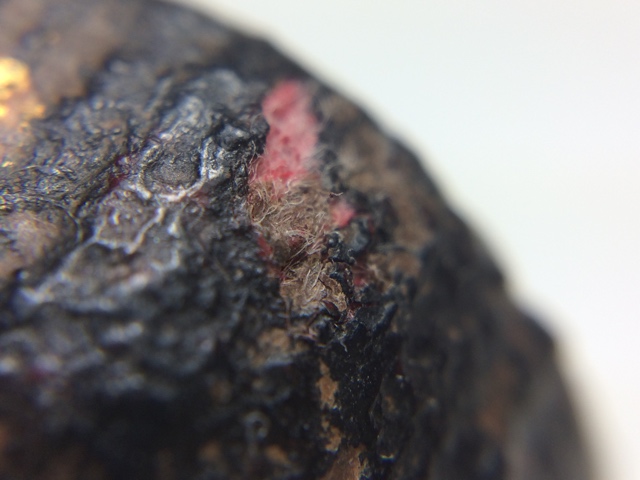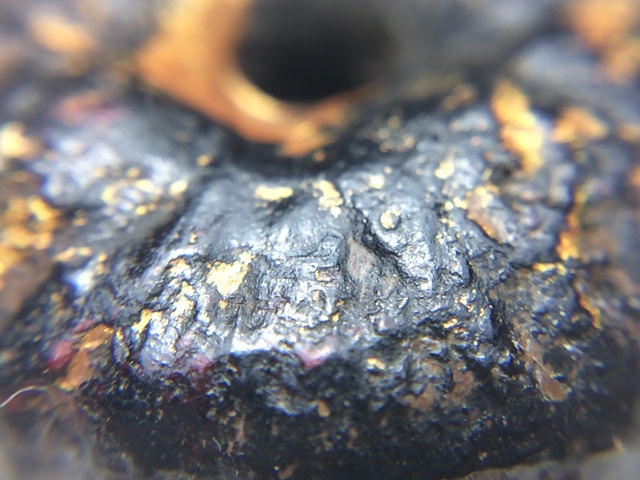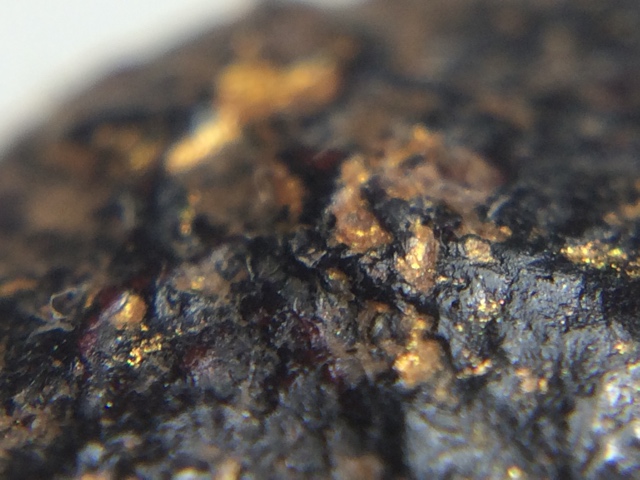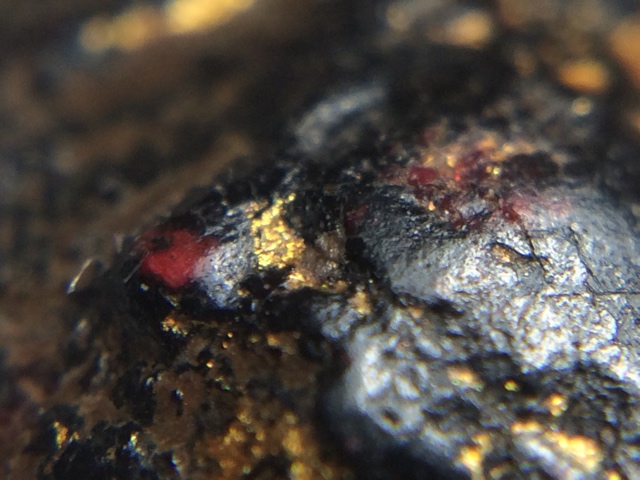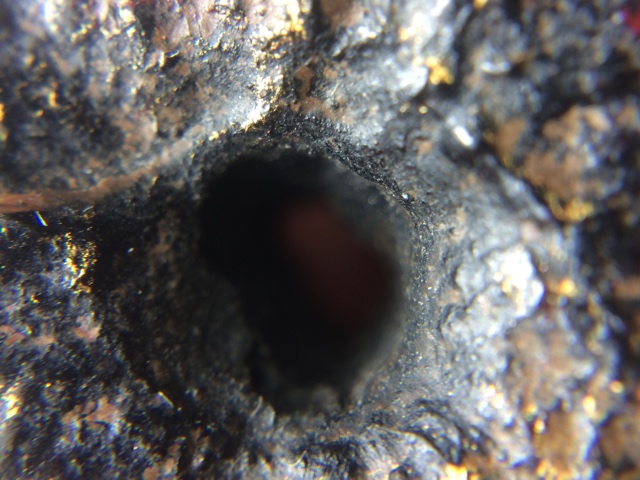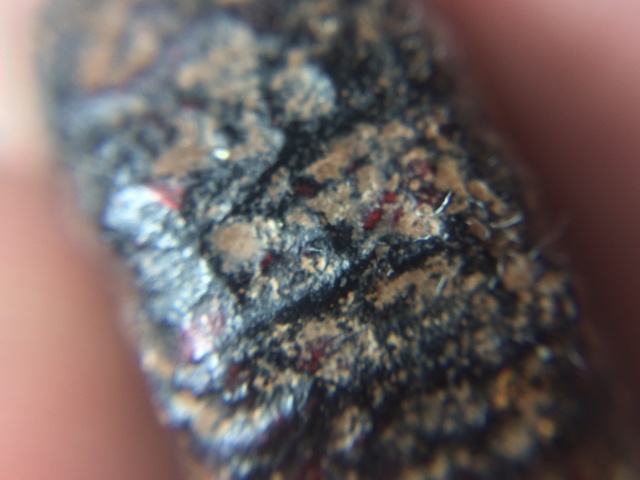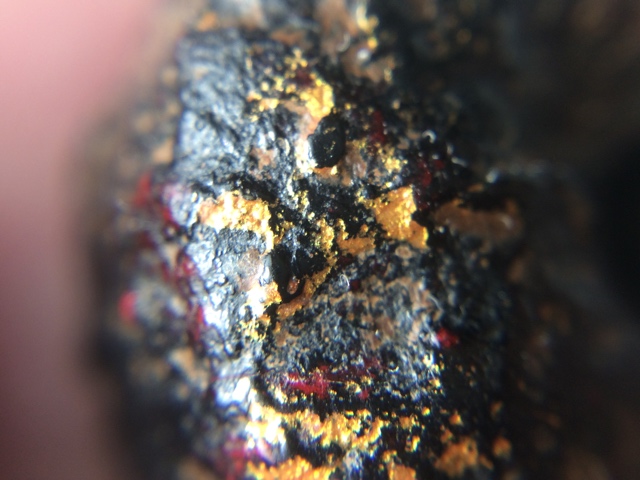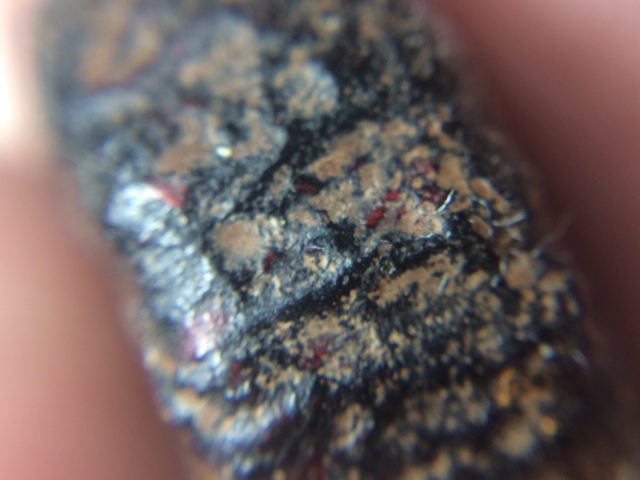The Takrut bailan Pitsamorn of Luang Por Gaew (2393 – 2462 BE) is an amulet that is over a century old and is considered an eminent member of the ‘Gao Yang Tee Kuan Mee Dtid Gaay’ (Nine Sacred amulets which one should wear for perfect blessings), of olden days, which was a famous proverbial saying of devotees of amulets in Thailand in olden times.
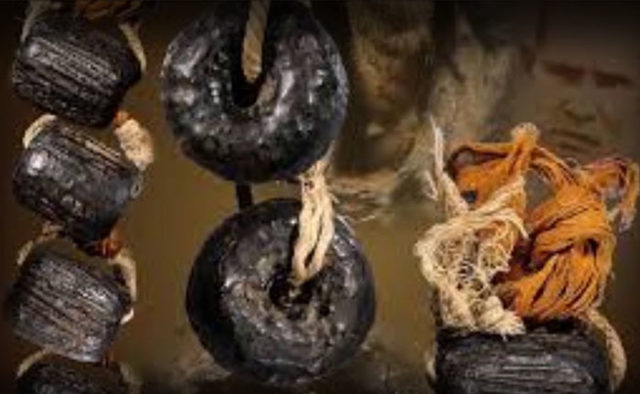
This exhibit below, is a perfect example of the classic and most commonly accepted Takrut Bailan Pitsamorn of Luang Por gaew being round like a wheel with a hole in the middle and wrapped with Sinjana cords, red ancient Chinese lacquer (Rak Chart), and gold leaf.
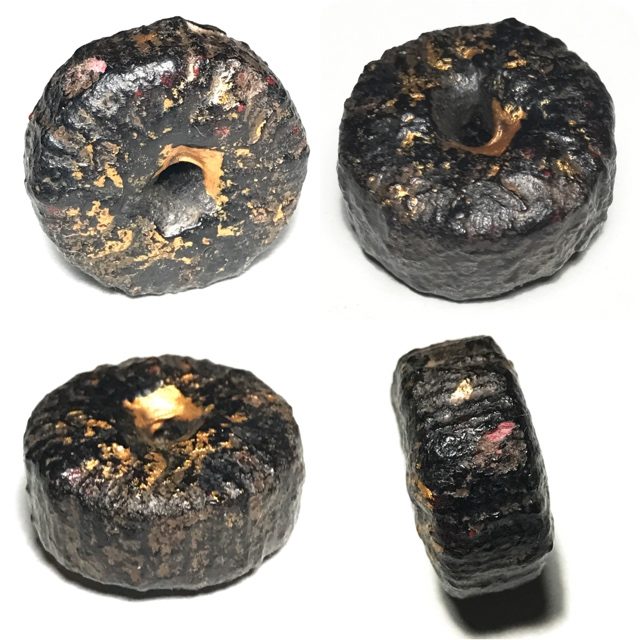
This exhibit can be considered ‘Tae Doo Ngaay’ (very easy to see its authenticity and true age), from the darkened hardened lacquer and depth of immersion of the gold leaf. The appearance of the amulet possesses exactly the right signs of natural ageing to authenticate its age as being from the Era of Luang Por Gaew, and its materials and style of making is inimitably supportive of this, which gives a 100% certainty of authenticity for this amulet.
The amulet should be worn on a neck-chain or at the lowest point above the waist, as it contains Bailan parchment scrolls with Buddhist Prayers, and should not be worn below the waist. The Takrut Bailan Pitsamorn of Luang Por Gaew is considered one of the top Nine amulets of all time of the ‘Krueang Rang’ Talismanic Charm category of Thai Amulets, famed for its Kong Grapan Chadtri Klaew Klaad and Metta Maha Niyom powers.
Luang Por Gaew made his Takrut Bailan from Bailan that came from the village of Bang Pern, whose name means ‘Block Guns’ and is part of how he began the empowerment of Maha Ud and Kong Grapan Chadtri within the parchment scrolls before inscription. When his devotees who he would ask to go toe bang Pern to cut Bailan parchment for him to inscribe, they would ask ‘why do we have to travel so far to get Bailan parchment when it grows nearby?’. Luang Por Gaew would always say ‘if you want the best of the best, sometimes you have to travel far and wide to find it, and if you dont go to get it, then you wont ever have the good stuff’
Luang Por Gaew would inscribe the Bailan leaves with the Khom letter ‘MI’ and encircle it with inscriptions of the Kata Hua Jai Suea Saming Were Tiger Invocation (Phū Pi Phū Pa) in Sacred Khom Agkhara Characters. The Hua Jai Suea saming is also known as the Hua Jai See Sahaay (four friends heart Mantra).
The strange thing is, that as Luang Por Gaew was gathering the materials in his Kuti to inscribe the Takrut, the birds in the forest were making lots of noise chirping and calling out. But as soon as Luang Por Gaew began his inscriptions, they all fell silent. As he finished the last one, and closed the ceremony, the birds of the forest all began to resound with loud calls and birdsong again immediately!!!
Luang Por Gaew delcared this to be a confirmation and sign that the spell within the Takrut possessed Maha Ud power, to silence (guns and enemies). The Takrut Bailan Pitsamorn is especially famopus for this Kong Grapan Chadtri power, but in addition is also highly regarded for Klaew Klaad and Maha Lap Serm Duang Metta Maha Niyom mercy Charm.
This revealed that Luang Por gaew knew that the Bailan of Bang Pern had special powers which is not found in all Bailan fields, and that the village of Bang Pern did not get its name for no reason, for the earth powers within this municipality defeated the powers of gunpowder, through a high presence of gunstopper minerals in the earth.
Below: Luang Por Gaew of Wat Puang Malai
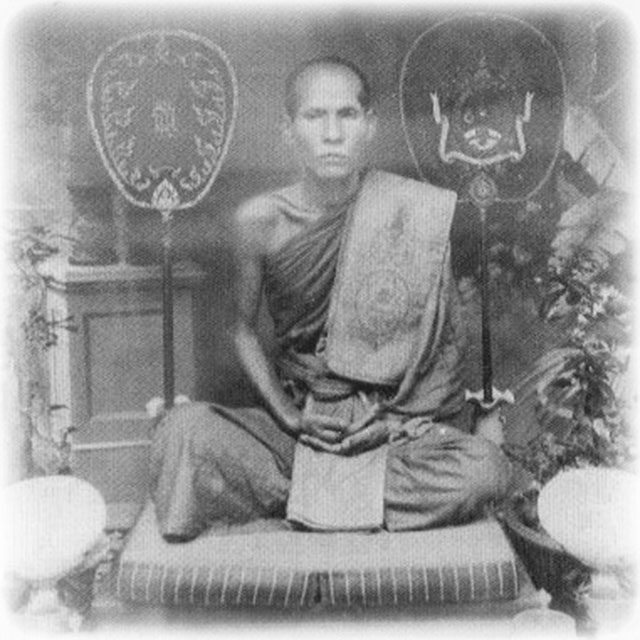
Luang Por Gaew Wat Puang Malai
The Takrut Bailan Pitsamorn is one of the most ancient forms of Takrut, and is considered very powerful protection against all forms of danger, including physical harm against sharp objects that pierce the skin (Kong Grapan Chadtri), Anti Ballistic Weaponry (Maha Ud), evade accidents (Klaew Klaad), against poisonous wild animals (Pongan Sadtw Raay), Anti Black Magick (Gae Aathan) and Ghosts and Demons (Gan Phuudt Phii Pisaj).

